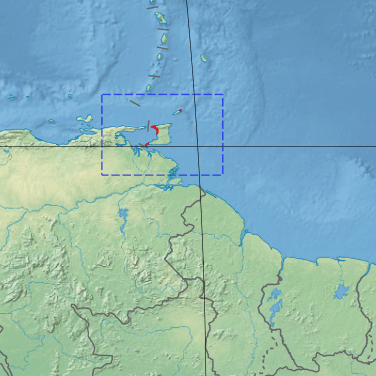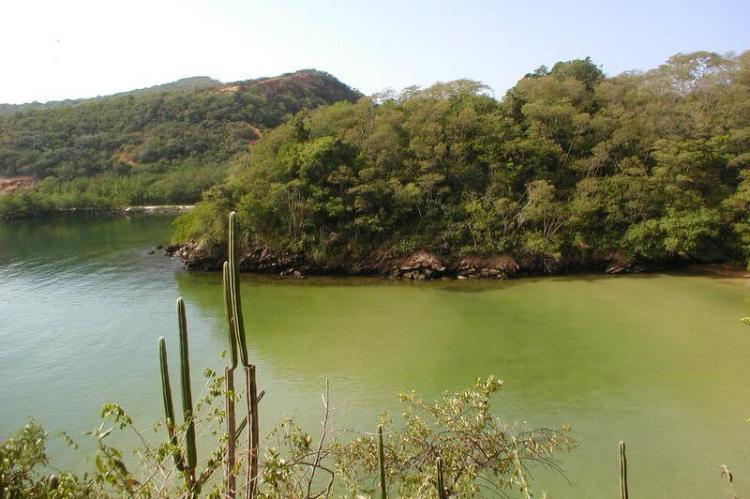The Resilient Dry Forests of Trinidad and Tobago
The islands of Trinidad and Tobago are home to diverse ecosystems, including a unique ecoregion known as the Trinidad and Tobago Dry Forests. While occupying only a small portion of the total land area, these deciduous woodlands play a vital role in the islands' overall ecological tapestry.
The Resilient Dry Forests of Trinidad and Tobago
Tucked away in the southernmost reaches of the Caribbean archipelago, the islands of Trinidad and Tobago are home to diverse ecosystems, including a unique ecoregion known as the Trinidad and Tobago Dry Forests. While occupying only a small portion of the nation's total land area, these sun-drenched, deciduous woodlands play a vital role in the islands' overall ecological tapestry.
The Geographic Context
The Trinidad and Tobago Dry Forests ecoregion is found in the northwest region of Trinidad and the northernmost tip of Tobago. Both Caribbean islands lie in close proximity to the South American mainland, with Trinidad separated from the continent by just 12 kilometers (7.5 miles) and Tobago situated an additional 30 kilometers (19 miles) to the northeast.
This geographic positioning has significantly influenced the character and composition of Trinidad and Tobago's ecosystems, including the dry forests in this ecoregion. The islands' location on the South American continental shelf and their position at the southern end of the Lesser Antilles chain have shaped the unique blend of floral and faunal communities found here.
Distinct Characteristics
In contrast to the lush, evergreen rainforests that cover much of Trinidad, the dry forests of this ecoregion are characterized by a more open canopy and a higher proportion of deciduous tree species. This structural difference is mainly due to the significantly reduced rainfall experienced in the dry forest areas, predominantly in the lowland and coastal regions of the islands.
Without the dense, continuous canopy of the rainforests, the dry forests allow more sunlight to reach the understory, typically dominated by evergreen shrubs and smaller trees. Mosses and epiphytes, which thrive in the humid conditions of the rainforests, are much less common in the drier environments of the dry forest ecoregion.
Notable Flora
The dry forests of Trinidad and Tobago are home to a diverse array of tree species adapted to the region's arid conditions. Prominent trees in this ecoregion include the small, fast-growing evergreen Lonchocarpus punctatus, which can reach heights of up to 18 meters (60 feet), and the small to medium-sized Bursera simaruba, which can grow up to 30 meters (100 feet) tall.
Other notable tree species in the dry forests include Machaerium robinifolium and Pithecellobium unguiscati. The understory is often dominated by evergreen species such as Eugenia spp. and Mayepea caribaea, providing a lush contrast to the more open canopy above.
In addition to the woody plants, the dry forests also support a variety of succulent species, including various cactus species and the iconic century plant (Agave evadens), which are particularly well-adapted to the arid coastal environments.
Faunal Diversity
While the dry forests of Trinidad and Tobago may not support the same faunal diversity as the more extensive rainforest ecosystems, these woodlands nonetheless play a vital role in sustaining the islands' overall biodiversity.
The open canopy and mosaic of habitats within the dry forest ecoregion provide resources and shelter for various bird species and smaller mammals, reptiles, and invertebrates. These dry forest communities help maintain connectivity and facilitate wildlife movement across the larger island landscape.
Threats and Conservation Efforts
Like many tropical ecosystems worldwide, the dry forests of Trinidad and Tobago face various threats, including habitat loss due to development, agriculture, and resource extraction. The fragmentation and degradation of these already limited forest areas can significantly impact the ecoregion's biodiversity.
In response to these challenges, conservation efforts have been undertaken to protect and restore the dry forests. For example, portions of the dry forest ecoregion are included within the boundaries of the Chaguaramas Environmental and Hiking Area, a protected natural space on the northwest coast of Trinidad.
Ongoing research and monitoring, as well as public education and community engagement, are crucial for ensuring the long-term survival of these unique and resilient dry forest ecosystems. As an integral component of Trinidad and Tobago's diverse natural heritage, preserving the dry forests remains an important environmental and cultural conservation priority.

Map depicting the location of the Trinidad and Tobago dry forests (in red).
